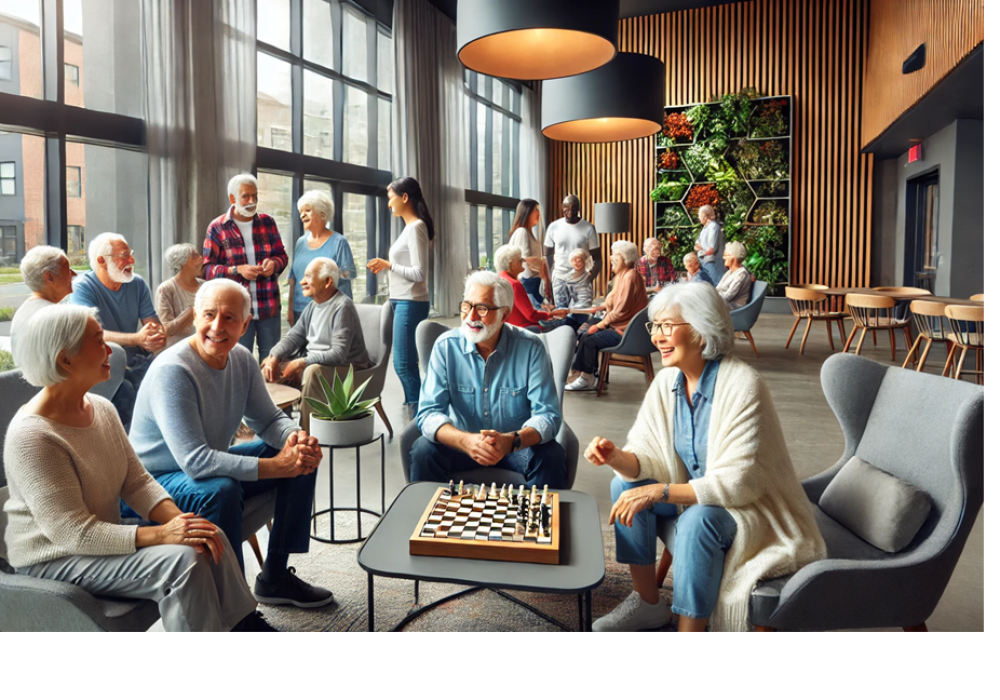Trends in Senior Living - Why Younger Seniors are Choosing Senior Living Earlier

Introduction: A New Approach to Senior Living
The concept of senior living has evolved dramatically over the last few decades. What was once seen as a last resort is now becoming a preferred lifestyle choice for many younger seniors—those in their late 50s, 60s, and early 70s. These active adults are choosing to transition to independent living communities earlier than previous generations, seeking a vibrant, maintenance-free, and socially engaging environment.
This shift reflects a broader cultural change: aging is no longer something to resist but something to optimize. Today’s younger seniors want to enjoy their retirement years on their own terms, in a way that supports their health, happiness, and independence.
Why Are Younger Seniors Moving to Senior Living Communities Sooner?
Several key factors are driving this trend:
1. A Desire for an Active Lifestyle
Many modern senior living communities are designed for people who want to stay physically active, mentally sharp, and socially engaged. These communities often feature:
- State-of-the-art fitness centers with personal trainers
- Walking trails, swimming pools, and golf courses
- Organized group activities such as yoga, dance, and cycling
- On-site classes for lifelong learning in subjects like art, technology, and language
- Pickleball courts and leagues
Instead of waiting until their health declines, many younger seniors are choosing independent living while they are still active and energetic, so they can enjoy these benefits to the fullest.
2. Avoiding the Burdens of Homeownership
Owning a home comes with a long list of responsibilities—maintenance, repairs, yard work, and property taxes. For many younger seniors, downsizing to an independent living community means freedom from these burdens while still having a beautiful, well-maintained living space.
- No more roof repairs, snow shoveling, or lawn care
- More time to travel, pursue hobbies, and spend time with family
- Financial predictability with a single monthly payment covering most expenses
3. Social Connection and Avoiding Loneliness
Studies show that social isolation is as harmful to health as smoking 15 cigarettes a day. As people retire, they often lose regular social interactions from work, which can lead to feelings of loneliness.
Moving to an independent living community earlier in retirement fosters deep social connections and friendships, helping residents stay engaged and emotionally fulfilled. Senior communities offer:
- Social clubs and hobby groups
- Communal dining and coffee lounges
- Group travel opportunities
- Holiday events and celebrations
Younger seniors are recognizing the importance of community and companionship in maintaining mental and emotional well-being.
4. Access to Future Care, If Needed
While independent living is designed for active seniors who don’t need daily assistance, many communities offer a continuum of care, meaning residents can transition to assisted living or memory care later if needed.
This “future-proofing” approach gives peace of mind, knowing that if their needs change, they won’t have to uproot their lives to find care elsewhere. By moving earlier, residents have time to settle into their community before any potential health concerns arise.
5. Financial and Long-Term Planning
Some younger seniors view early entry into a senior living community as a smart financial move. Many communities offer fixed-rate housing and services, allowing residents to budget more effectively compared to unpredictable homeownership costs.
Additionally, locking in residency earlier can provide financial advantages, as waiting until health declines may limit options or increase costs. Some communities even offer buy-in models or refundable entrance fees, making it an attractive long-term investment.
How Many Seniors Are Choosing to Move Earlier?
The number of seniors moving into independent living communities earlier is steadily increasing. While past generations typically waited until their late 70s or 80s to transition into senior housing, today’s younger seniors are entering between ages 60-75.
According to U.S. Census data:
- The population of Americans aged 65+ is projected to reach 80 million by 2040.
- By 2030, 1 in 5 Americans will be 65 or older.
- Over 50% of retirees say they plan to downsize within five years of retiring.
With millions of Baby Boomers entering retirement, the demand for independent living communities is growing fast, and younger seniors are leading the way.
How Senior Living Communities Are Changing to Meet This Demand
Because younger seniors are seeking more dynamic and engaging lifestyles, independent living communities are evolving to cater to their needs. Modern communities are focusing on:
- Luxury Amenities: Spa services, gourmet dining, and resort-style pools
- Technology Integration: Smart home features, virtual reality fitness, and telehealth access
- Wellness Programs: Meditation, holistic health, and nutrition coaching
- Flexible Living Options: Apartments, townhomes, and even RV communities designed for retirees
This shift means senior living is no longer about just having a place to stay—it’s about having a place to thrive.
How to Decide if Moving Earlier Is Right for You
If you’re considering moving into a senior living community earlier in retirement, ask yourself these questions:
- Do you want less responsibility for home maintenance?
- Are you looking for more social opportunities and friendships?
- Would you benefit from fitness programs and wellness amenities?
- Do you like the idea of a predictable budget for housing and living expenses?
- Would it give you peace of mind to have access to future care if needed?
If you answered “yes” to several of these, exploring independent living options sooner rather than later might be a great choice.
Conclusion: A New Era of Retirement Living
Younger seniors are redefining what it means to "retire". Instead of waiting for life’s circumstances to force a move, they are choosing senior living earlier—embracing a lifestyle of freedom, community, and wellness.
By transitioning to independent living sooner, they are ensuring they get the most out of their retirement years, free from stress and full of opportunities for growth, adventure, and connection.
The future of senior living is no longer about aging gracefully—it’s about living vibrantly.